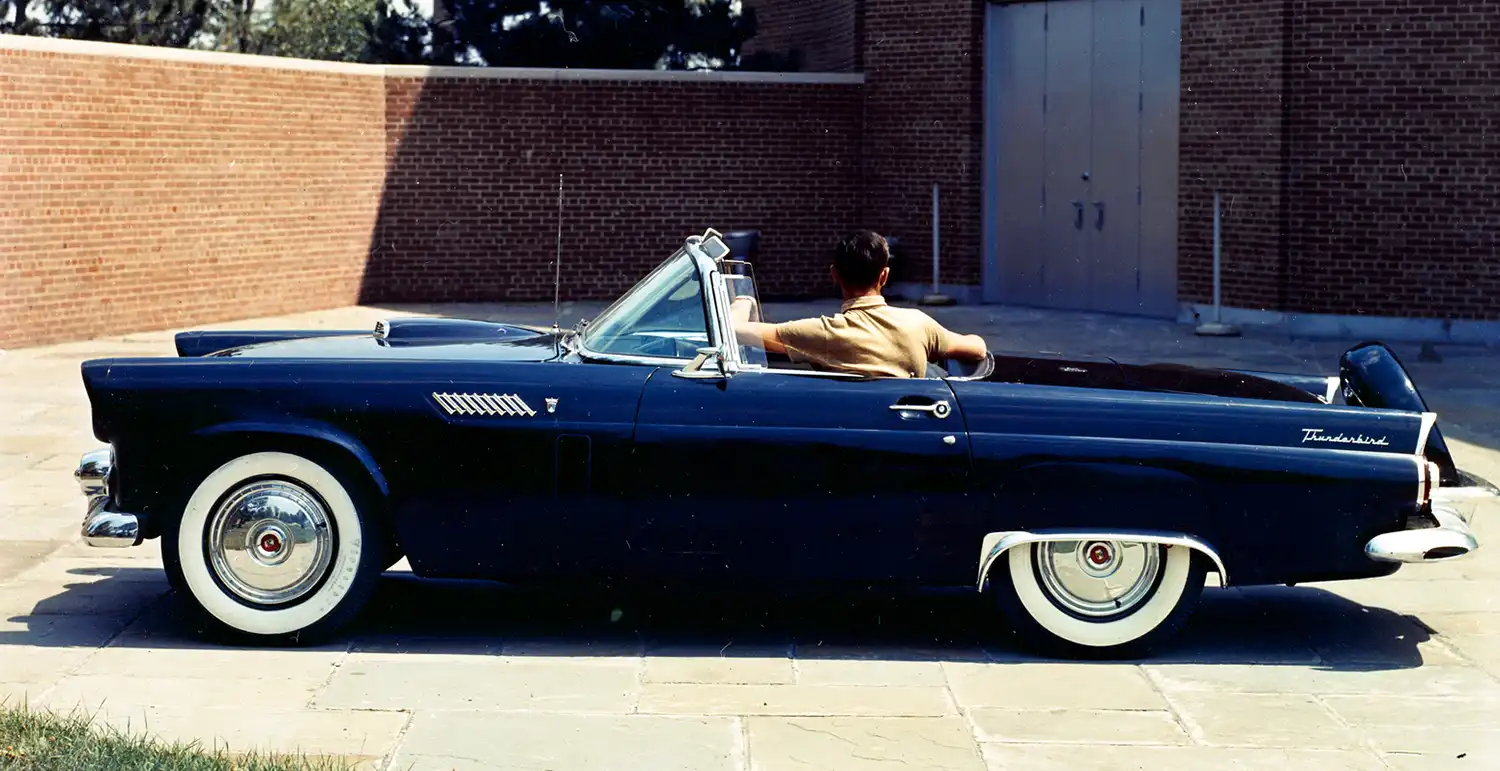
Few vehicles capture the imagination quite like the 1956 Ford Thunderbird Convertible. This isn’t just a car; it’s a vibrant splash of mid-century American style and a pivotal moment in automotive history. From its elegant lines to its distinctive features, the 1956 Ford Thunderbird Convertible created a new niche, becoming an instant icon and a symbol of post-war prosperity and optimism.
The Birth of a Legend: Ford’s Answer to a New Market
The Ford Thunderbird, affectionately known as the “T-Bird,” first arrived in 1955. It wasn’t designed to be a pure sports car like its rival, the Chevrolet Corvette. Instead, Ford envisioned a “personal luxury car.” This was a segment that the Thunderbird essentially created. It offered comfort and style alongside a sporty feel. The 1956 model built upon this successful foundation, solidifying its place in automotive lore.
Distinctive Features: The 1956 Thunderbird’s Unique Appeal
The 1956 Ford Thunderbird Convertible carried over much of the sleek styling from its inaugural year. However, it introduced several key changes that made it instantly recognizable. One of the most famous additions was the optional “porthole” windows in the removable hardtop. This feature not only improved rear visibility but also became an iconic design cue.
Another notable change for 1956 involved the spare tire. It was moved from the trunk to an exterior “Continental kit” mounted at the rear. This modification significantly increased trunk space, adding practicality to its glamorous image. These thoughtful refinements truly enhanced the Thunderbird’s appeal.
Power and Performance: Driving the ’56 T-Bird
Under the hood, the 1956 model offered robust engine options. While the standard was a 292 cubic-inch Y-block V8, a new 312 cubic-inch Y-block V8 was introduced. This larger engine delivered more horsepower, ranging from 215 to 225 horsepower depending on the transmission. Paired with either a 3-speed manual, an optional manual overdrive, or the Ford-O-Matic automatic transmission, the Thunderbird provided ample power for effortless cruising. Its performance was brisk, perfect for the open road.
A Cultural Phenomenon: The Thunderbird’s Enduring Legacy
The 1956 Ford Thunderbird Convertible quickly became a symbol of post-war American optimism and prosperity. It appeared in films and advertisements, cementing its status as a cultural icon. The T-Bird was more than just transportation; it represented a lifestyle. Its blend of sporty lines and luxurious appointments resonated deeply with buyers.
Ford’s decision to position the Thunderbird as a “personal car” rather than a full-blown sports car proved to be a stroke of genius. It outsold the Corvette significantly in its early years. This demonstrated a strong market demand for a stylish, comfortable two-seater that wasn’t solely focused on raw speed. Its success paved the way for future personal luxury vehicles.
The 1956 Thunderbird’s legacy continues to this day. It stands as a testament to American design and engineering from a golden age of motoring. Owning one means holding a piece of that vibrant history. It’s a car that still turns heads and evokes a sense of timeless elegance wherever it goes.
Disclaimer: Vehicle specifications and details are provided as a general guide and may be subject to change or verification.
Source: Ford Heritage Vault
